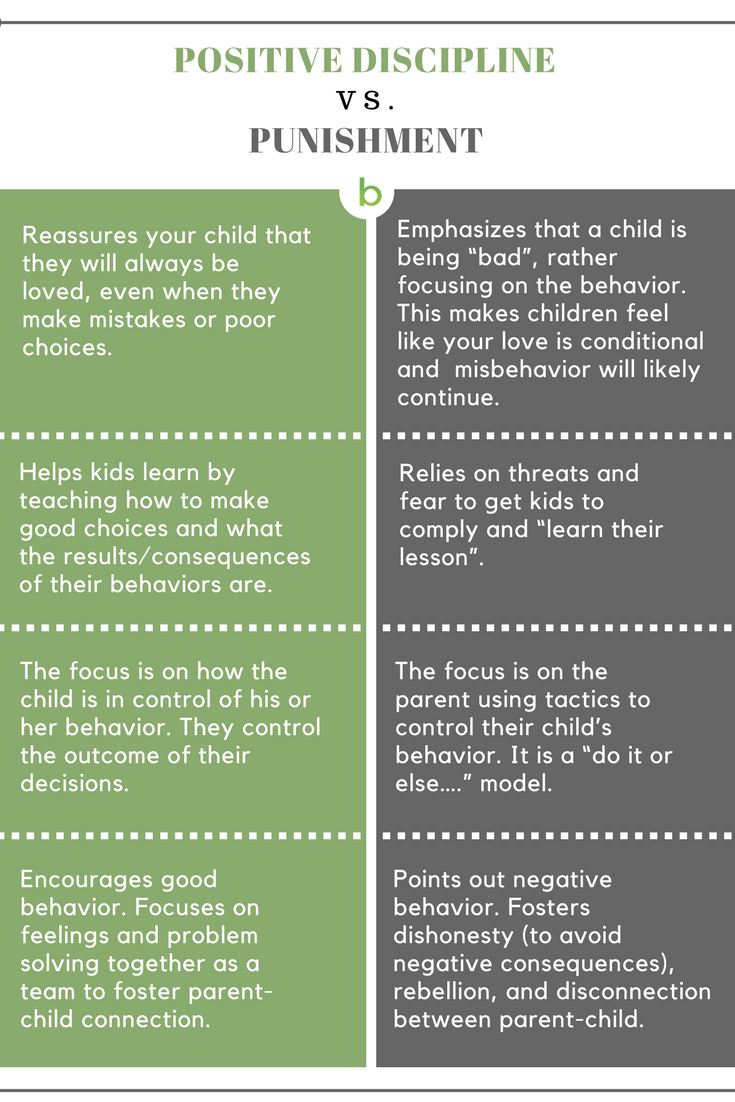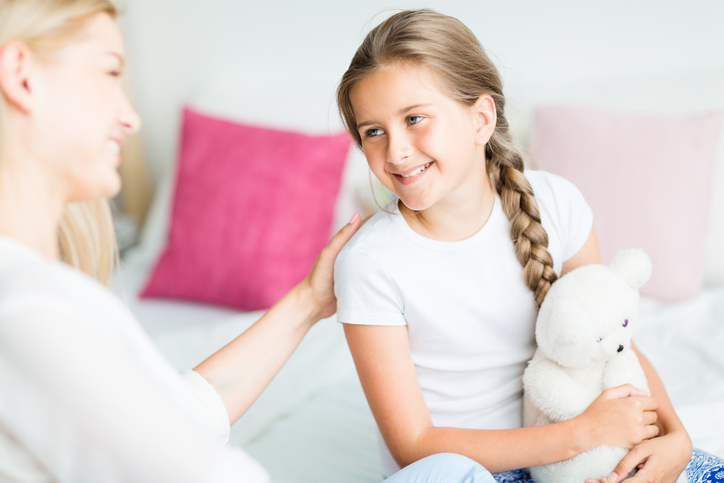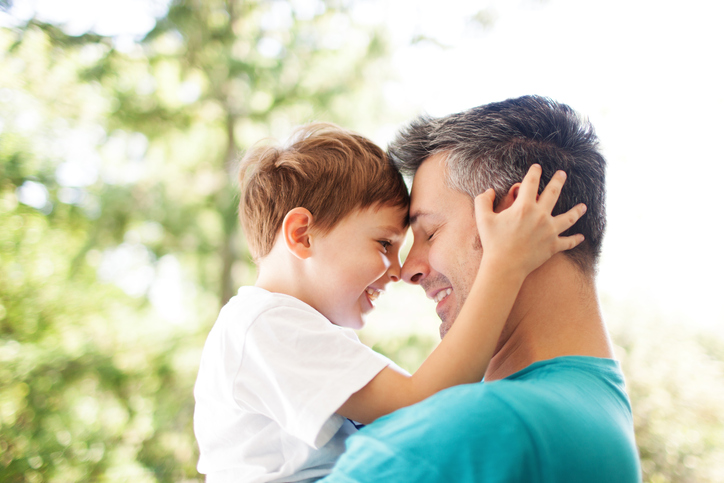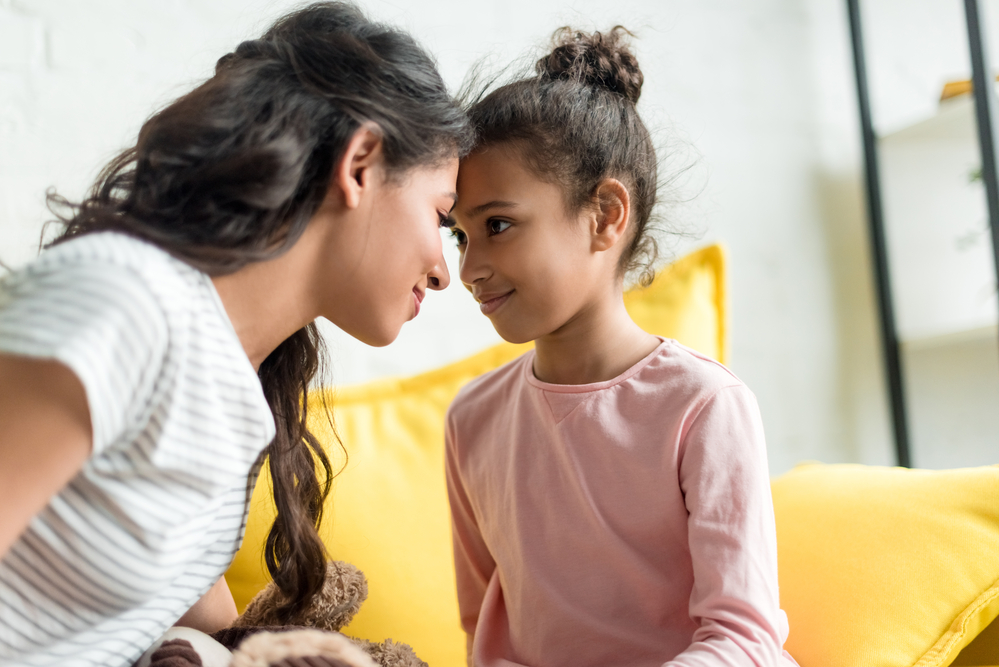Are you tired of constantly yelling at your kids? Do you want your children to do the right thing, without you having to coerce or threaten them?
So did we, which is why we started researching positive discipline.
A big issue faced by schools these days is bullying. Many parents we talked to struggle with how to stop this type of behavior.
But without knowing it, parents may actually model bullying to their kids when they use threats or physical punishments to get them to do things.
Why practice positive discipline? There are many reasons to avoid trying to control kids with threats of punishment.
- It creates resentment.
- Research has shown that it doesn’t work in the long term.
- There are other, more gentle and loving ways to teach kids to behave.
This gentler path to good behavior is positive discipline.
What Is Positive Discipline?
Positive discipline is a parenting model based on the idea that there are no bad children, just good and bad behaviors.
And isn’t that the core of what we are trying to communicate to our kids?
We don’t want them to think they ARE BAD, but we do want to reinforce good behaviors and wean out the bad ones, without causing any physical or emotional damage in the process.
“One generation full of deeply loving parents would change the brain of the next generation, and with that, the world.” —Charles Raison
Positive discipline stays away from induced fear, humiliation, shame, guilt, yelling, threats, or any kind of emotional coercion.
Instead it focuses on establishing reasonable limits and correcting missteps when they occur in a kind and encouraging manner.
The Difference Between Discipline and Punishment:
To illustrate the difference between the old-school punishment model and positive discipline, we thought it might be cool to share this handy-dandy chart.

Why Positive Discipline Works:
Positive discipline is designed to strengthen the relationship between parent and child. It also works to understand a child’s needs and be sure those needs are met.
The main reasons kids act out is because either they feel disconnected from their caregivers, or they aren’t getting a particular need met.
So it makes sense that a strategy to reduce both these situations will result in better behaved kids.
RELATED: A Parent’s Guide For Raising Kind Kids
Traditional punishment models get results through fear, shame, and guilt. These feelings erode self-esteem and can lead to anger and resentment, which results in more bad behavior.
It also doesn’t teach kids to think about why certain behaviors are wrong or how their actions impact others.
Positive discipline focuses on teaching children HOW to do things the right way.
It asks kids to put themselves in other people’s shoes and to problem solve, which leads to feelings of accountability and responsibility.

Positive Discipline Strategies:
Many times parents turn to punishment because it tends to be easier. We get it. Positive discipline takes PATIENCE.
It takes time to figure out a child’s needs and to teach them a better way of doing things.
Plus positive discipline requires you to put your own feelings of frustration and anger on the back burner so you can be encouraging and maintain the connection with your child.
“Patience is a virtue. When it comes to positive discipline, patience is THE VIRTUE.”
This is a one of those parenting skills that takes time and practice to learn, just like any other skill would.
We share Four Positive Discipline Strategies you can use to gently correct your child and get them back on the path to good behavior.
RELATED: Top Ten Helpful Parenting Books
1. Understand Needs
Many parents see their kids’ uncooperative behavior as a challenge to their authority. But in reality, uncooperative behavior is usually caused by a child’s need not being met.
This means if we can uncover the need, we can resolve the bad behavior.
How can you determine a child’s underlying needs? View their behavior as a kind of code, then attempt to translate it.
Think about the behavior and turn it into a sentence that begins “I need____” or “I feel_____”.
Once you fill in the blank, you can respond to the need and stop the undesirable behavior.
For example, if a child is whining and crying because they don’t want to leave the playground, address it.
“I know you want to keep playing and it makes you angry that we have to leave. But daddy is waiting for us at home. We can play again tomorrow.”
Seeing that your child is acting up because they are hungry, tired, or frustrated can change your entire perspective and make you much more empathetic with their plight (and less likely to resort to yelling or threats).
2. Distraction
Distraction is a simple technique that works especially well with younger children.
For example, if your toddler is reaching for a steak knife left on the table, say “That’s not safe! Knives can hurt you.”
Then say, “come look at this toy instead!” Your child will turn away from the knife and come connect with you over the toy.
The knife has been labeled as harmful, danger was avoided, and no yelling happened.
RELATED: How To Handle Temper Tantrums In Toddlers
Distraction is also extremely helpful when kids get cranky and whiny because they have to wait for something.
Are you stuck in line? Play a fun game of I-Spy.
Sitting in a car waiting for someone? Try a little sing-a-long.
Waiting for a show to start? Let em’ listen to your iPod.
If your child is distracted, they are less likely to cry or pitch a fit out of boredom.

3. Instruction
The idea behind instruction is to tell your kids what you DO WANT instead of telling them to stop doing whatever it is you don’t want.
This is one of those parenting techniques that takes a little practice, but the results are worth it.
- Instead of saying “No yelling!” try saying “I expect you to use your inside voice when we are here.”
- Instead of saying “Don’t run!” say “Walk, please.”
- Instead of saying “Stop hitting your brother!” try saying firmly, “I expect you to treat your brother kindly. If you are upset, then use your words.”
Focus on the desired behavior. Putting the focus on what your kids shouldn’t do often has the effect of making them want to do it even more.
As an experiment, try telling someone not to look behind them and you’ll see what we mean. People usually look.
But if you shift the focus to the behaviors that you do want, kids (who naturally want to please you) are more apt to do the right thing.
4. Connection
One of the core tenets of positive parenting is that kids are at their best and “behave” more when they feel deeply connected to their caregivers.
When kids feel like part of a family tribe they will do their best to make you happy and proud, which means following the rules you’ve set for them.
Therefore, taking time to play, talk, and connect with your kids will result in them being more cooperative in general.
Timeouts are just another version of punishment by banishment and humiliation.
They leave kids alone to manage their raw emotions, which they are not mature enough to do. Timeouts ultimately erode the parent-child relationship.
RELATED: How To Stop Whining Kids And Save Your Sanity
Instead of using timeouts, try doing a “time-in”.
When your child needs parental guidance, rather then send them away, go to a quiet place TOGETHER where you can calm down and problem solve.
During a time-in ask your child to think of how his or her actions affect others, as well as ways they can resolve or reconcile the situation.
This is a great opportunity for you to help your child take responsibility for their actions.
A time-in becomes a teaching moment. It also maintains the strong connection between yourself and your child, which lessens the chance of them making the same poor choice.
RELATED: Best Parenting Advice: 8 Tips Straight From Moms
When we take the time to really respect our kids and teach them how to do the right thing and have empathy for others, we’re doing our best as parents to raise happy, healthy and secure adults.
SHARE these positive discipline strategies with friends on Facebook or Pinterest by clicking the buttons below.












